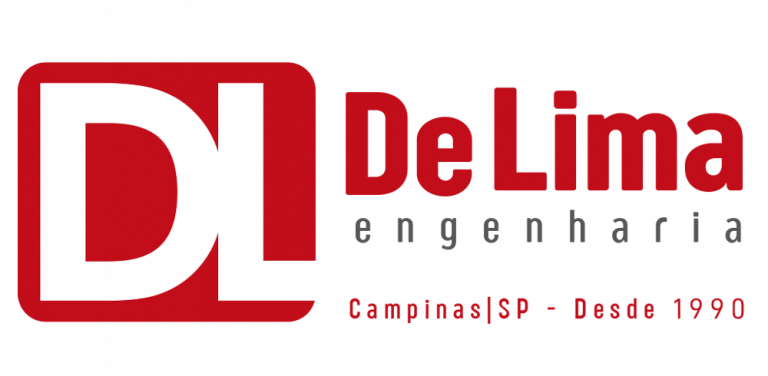-
Discover the Future of Investments – A Comprehensive Guide to Stake Mines
-
Understanding Stake Mines: Key Concepts
-
Understanding Stake Mining and Its Significance
-
Differentiating Stake Mining from Traditional Mining
-
How to Start with Stake Mining: Step-by-Step Process
-
Choosing the Right Platform for Stake Mining
Discover the Future of Investments – A Comprehensive Guide to Stake Mines
In an ever-evolving financial landscape, traditional methods of capital deployment are being challenged by innovative approaches that promise to reshape wealth management strategies. Among these, a novel sector is emerging stake mines as a focal point for both seasoned financiers and newcomers alike. With advancements in technology and changing market dynamics, understanding this domain is crucial for anyone looking to enhance their portfolio.
Recent analyses indicate that participants in this area can leverage various models and mechanisms to optimize returns. Utilizing platforms that prioritize decentralization and transparency may provide a competitive edge. Statistics reveal that early adopters of these strategies have experienced significantly higher yields compared to conventional asset management routes. Emphasizing thorough research and strategic entry points might position investors favorably in this domain.
Moreover, familiarity with specific tools and methodologies can drastically alter performance outcomes. For instance, engaging with community-driven protocols can increase the likelihood of successful engagements. As this sector matures, ongoing adaptation and informed decision-making will become paramount. Keeping abreast of current trends and practices will enhance one’s capacity to navigate this intricate arena proficiently.
Understanding Stake Mines: Key Concepts
Engagement in this sector hinges on grasping essential principles. Central to this realm are smart contracts that automate and enforce agreements without intermediaries. They offer transparency and security, crucial for participants seeking reliable transactions. Comprehending the mechanics behind these contracts is fundamental for effective operational strategies.
Tokens play a vital role, representing assets or voting rights within a network. Ownership of these digital tokens can yield rewards, often tied to network performance or governance decisions. It’s important to analyze tokenomics, encompassing supply, demand, inflation rates, and distribution models to assess potential profitability.
Liquidity is another significant factor, referring to how easily assets can be bought or sold without substantial price changes. Evaluating liquidity pools and trading volumes can inform choices about where to allocate funds. Higher liquidity generally signals healthier markets.
Risk management is critical. Diversifying participation across various platforms mitigates exposure to platform-specific vulnerabilities. Conduct thorough due diligence, examining teams behind projects, market positioning, and user reviews to identify potential red flags.
A key concept is yield generation. Participants can stake assets to earn returns, usually in the form of additional tokens. Factors influencing yields include network fees, staking duration, and overall performance. Compare yields across different schemes to optimize returns effectively.
Lastly, it is wise to stay abreast of regulatory developments, as they impact operational frameworks. Understanding jurisdictional laws helps in navigating compliance issues and avoiding potential pitfalls. Incorporate a legal perspective to enhance sustainability of participation.
| Smart Contracts | Automated agreements ensuring security and transparency |
| Tokens | Digital representations providing value and governance rights |
| Liquidity | Easiness to trade assets without large price impacts |
| Risk Management | Diversification to lower exposure to specific vulnerabilities |
| Yield Generation | Returns earned by staking assets over time |
| Regulatory Awareness | Understanding laws affecting operations and compliance |
Understanding Stake Mining and Its Significance
Stake mining refers to a process within decentralized finance where participants lock up a particular cryptocurrency in a network to support its operations. In return, these users receive rewards, often in the form of additional tokens. This mechanism plays a pivotal role in maintaining network integrity, validating transactions, and securing blockchains, thus ensuring decentralization and trust in peer-to-peer transactions.
The importance of this process lies in its dual benefit: it allows holders to earn passive income while simultaneously contributing to network stability. For many digital asset holders, this approach enhances liquidity and fosters a steady growth strategy for portfolio expansion. Moreover, as more individuals engage in stake mining, the overall security of the blockchain improves, deterring malicious activities.
Participants should consider the specific protocols involved, as yields can vary significantly across different platforms. Identifying opportunities with robust ecosystems and active communities is crucial for maximizing returns. Additionally, staying informed about the underlying technology and market trends can provide insights into potential price movements, helping investment decisions align with broader financial goals.
As this activity gains traction, understanding its mechanics and implications becomes essential for anyone serious about navigating the digital asset landscape effectively. Diversifying across various staking options can mitigate risks associated with volatility, ultimately enhancing overall performance within crypto portfolios.
Differentiating Stake Mining from Traditional Mining
In the realm of cryptocurrency, two prominent methods for generating new coins exist: conventional mining and stake minting. While both approaches serve to secure networks and validate transactions, they fundamentally differ in process and underlying principles.
Conventional mining relies on substantial computational power. Miners utilize specialized hardware to solve complex mathematical problems, known as proof-of-work. This system demands significant electricity and resources, which can lead to environmental concerns. Additionally, profitability hinges on hardware efficiency and electricity costs, which fluctuate widely.
Conversely, stake minting operates on proof-of-stake principles. Participants are chosen for block creation based on the number of coins they hold and are willing to ‘stake’ or lock up as collateral. This mechanism diminishes the need for vast energy consumption, contributing to a more sustainable ecosystem. Moreover, rewards are proportional to one’s holdings, encouraging longer-term participation rather than constant hardware upgrades.
In terms of barrier to entry, traditional mining can be daunting for novices. Initial investment in high-performance equipment and ongoing electricity expenses may pose significant challenges. On the other hand, staking is often accessible on standard devices or even within supported wallets, allowing a broader range of users to engage without extensive upfront costs.
Reward structures also differ significantly between these methods. Miners receive newly minted coins and transaction fees, while stakers earn rewards through transaction validations proportionate to their commitment. This shift can lead to more stable earnings over time without the volatility tied to mining rewards influenced by network competition.
In summary, while both mining methodologies play crucial roles in blockchain networks, their operational frameworks vary greatly. Understanding these differences can aid investors in making informed decisions aligned with their preferences for resource allocation, sustainability, and potential returns.
How to Start with Stake Mining: Step-by-Step Process
Initiating a journey in stake mining involves understanding procedures and adhering to specific steps. This approach allows participants to earn rewards by supporting network operations. Here’s a structured method to begin:
-
Research Your Options:
Explore various blockchains that utilize staking mechanisms. Examine their protocols, potential returns, and community support. Favor networks with a strong track record and developer engagement.
-
Select a Cryptocurrency:
Choose a coin that offers staking capabilities. Popular choices include Cardano, Tezos, and Polkadot. Assess their market performance, staking rewards, and lock-up periods.
-
Create a Wallet:
Set up a wallet that is compatible with your selected cryptocurrency. Options range from software wallets to hardware devices. Ensure your wallet provides a user-friendly interface and robust security features.
-
Acquire Coins:
Purchase your chosen cryptocurrency through an exchange. Utilize platforms with favorable fees and high liquidity. Transfer your assets to your wallet for staking purposes.
-
Choose a Staking Method:
Decide whether to stake independently or join a staking pool. Solo staking grants full rewards but requires higher amounts and technical know-how. Pools enable shared resources and lower barriers to entry.
-
Set Up Staking:
Follow specific instructions for your chosen method. If joining a pool, select one that has a strong reputation and fair fee structure. For solo staking, configure your node as per the network guidelines.
-
Monitor Performance:
Regularly check your staking status and rewards. Use tools provided by the network to track your earnings and ensure optimal performance of your node or pool participation.
-
Stay Informed:
Keenly follow updates pertinent to the network. Join forums, read newsletters, and participate in community discussions. This allows you to adapt to changes and understand market dynamics.
Implementing these steps effectively will pave the way for successful participation in stake mining. Engage with the community and remain proactive in your approach for optimal returns.
Choosing the Right Platform for Stake Mining
When selecting a platform for stake mining, several critical factors come into play. Understanding the underlying technology and ecosystem of each platform can significantly impact both yield and security.
Firstly, assess the blockchain protocol used. Some systems are more established, like Ethereum 2.0, while others may be newer or less proven. Research their consensus mechanisms, as variations like Proof of Stake (PoS) or Delegated Proof of Stake (DPoS) can influence efficiency and rewards.
Next, consider the user interface and experience that the platform offers. A well-designed interface simplifies navigation and makes it easier to monitor assets. Platforms that require minimal technical knowledge may be advantageous for less experienced users, whereas advanced options may cater to seasoned miners.
Transaction fees must also be factored into your decision. Platforms with lower fees can enhance overall returns on your holdings, especially for frequent transactions. Check different commission structures, as some platforms might offer fee discounts for higher stakes or longer commitment periods.
Security should be paramount when choosing a venue. Look for platforms with robust security measures such as multi-signature wallets, cold storage options, and regular security audits. Transparency regarding past hacks or vulnerabilities can indicate a platform’s overall reliability.
Community and support play an essential role in user experience. Platforms with active user communities tend to provide better resources and quicker support responses. Check forums, social media channels, and official documentation for insights into user engagement and issue resolution.
Rewards structure is another vital aspect. Understand how interest is calculated, the distribution frequency, and any potential penalties for early withdrawal. Certain platforms may offer higher returns but entail longer locking periods, while others provide more flexible options with lower yields.
Lastly, integration with wallets and additional services may enhance functionality. Platforms allowing seamless connection to reputable wallets can simplify management, while those offering services like staking pools or rewards through DApps may add extra layers of utility.

